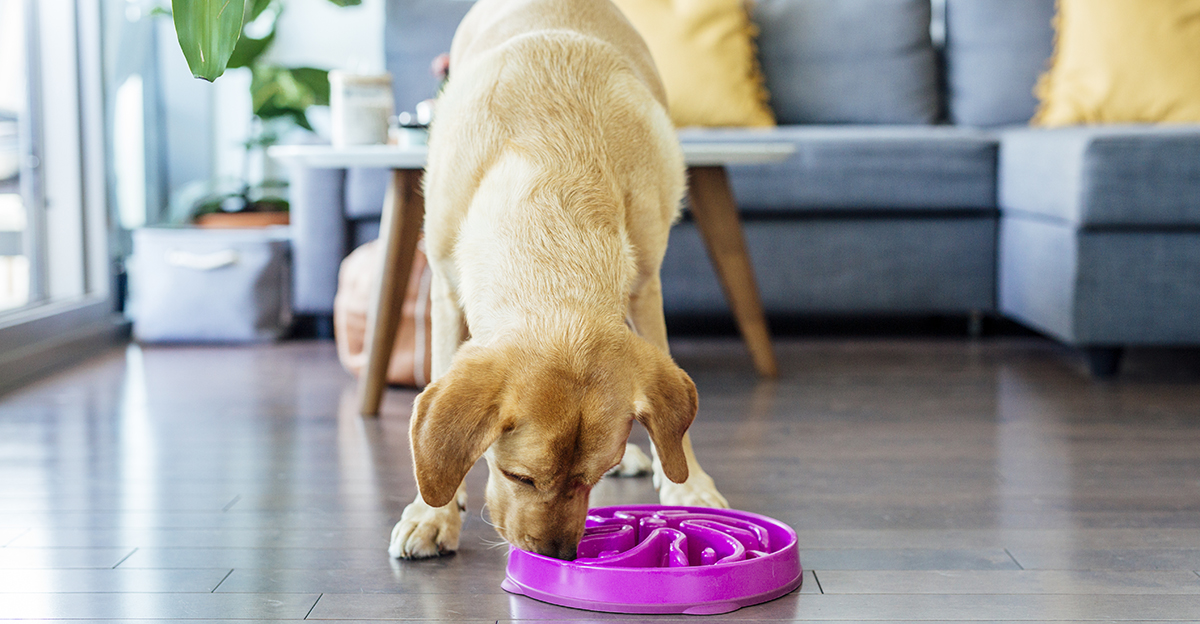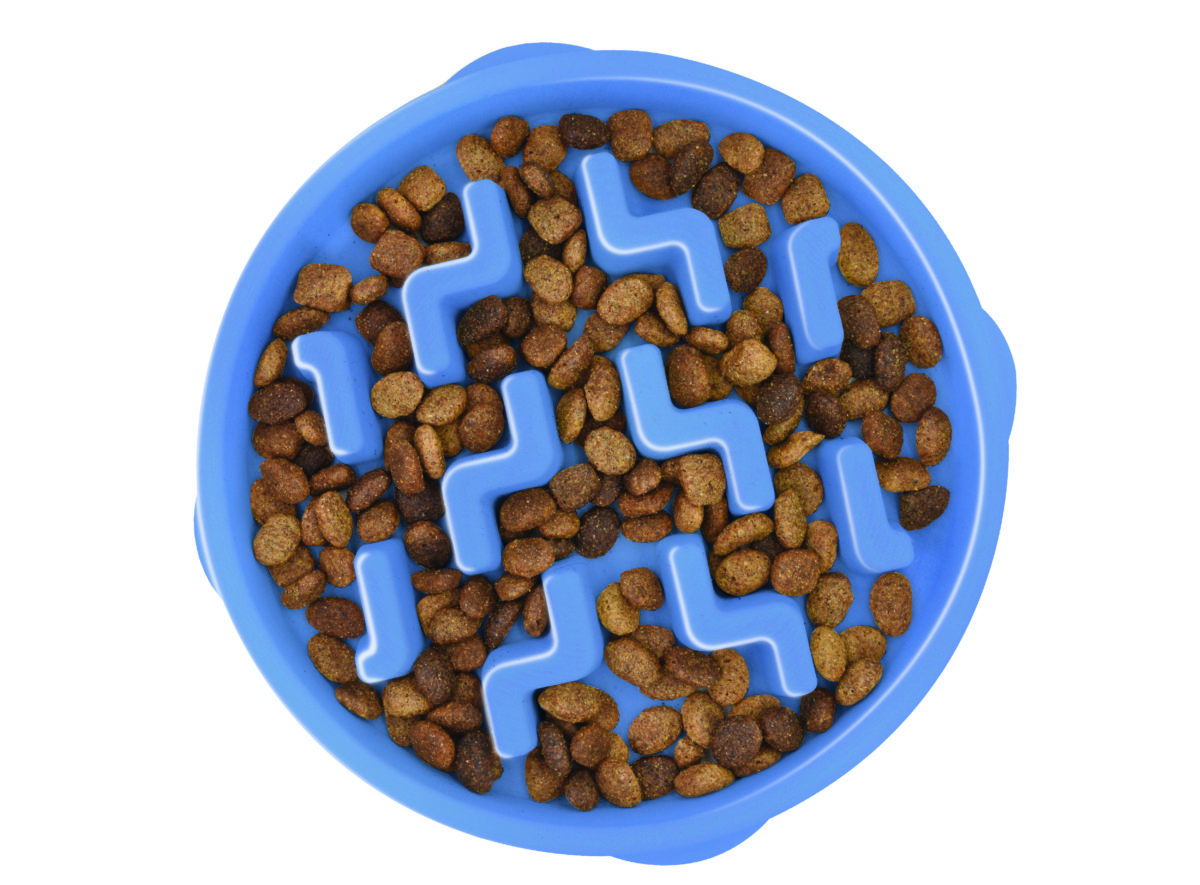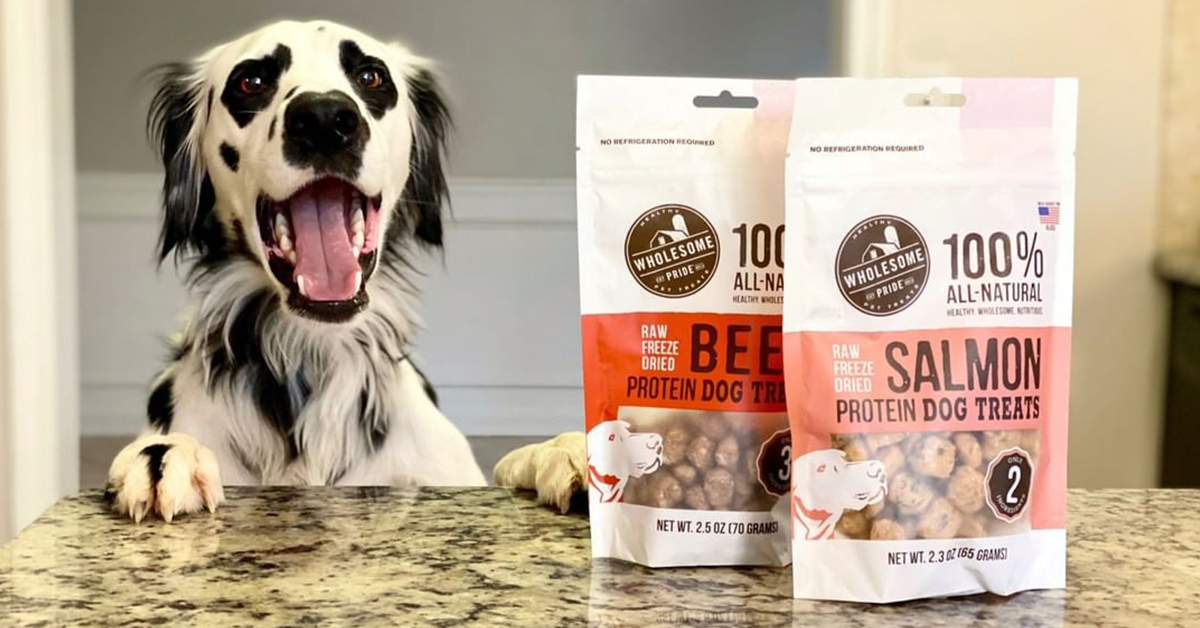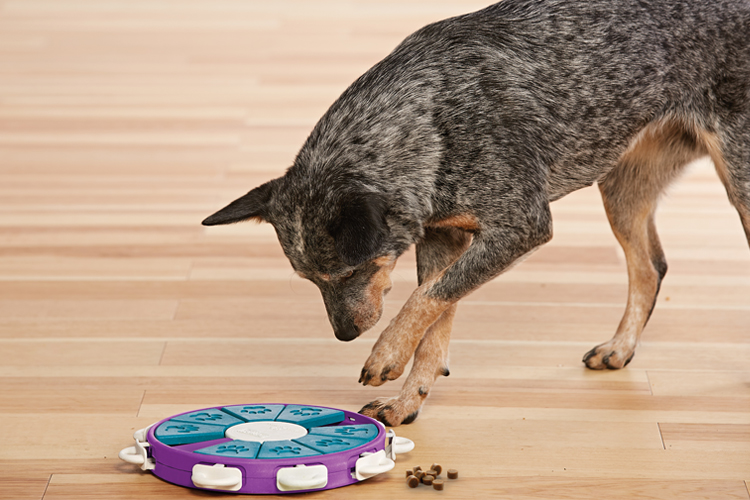Itchy skin is no fun for the pup or anyone around him, is it? You get a dog who’s constantly scratching, and you’re left trying to figure out why your pup has dry skin problems.
Unfortunately, skin issues are common in pets. According to veterinarians, skin health is one of the biggest concerns for pet owners. Since skin is the largest organ on your dog’s body, it makes sense it can act as a general bellwether for overall health.
Let’s take dry skin. Skin issues can be a symptom of a deeper problem. For example, parasites and common allergens can cause itchy skin.
Dry, itchy skin not only causes dogs to itch, bite, and chew on themselves seeking relief, but it can also be a sign of a low immune system or another health issue.
Yet, armed with a bit of knowledge, you can improve your dog’s skin and coat and help your doggo feel better from the inside out!
Symptoms of Dry Skin for Dogs

The symptoms of dry skin are easy to spot. You might hear the thump thump thump of your pup scratching behind the ear all day and night.
In some cases, your dog might chew and bite at an area enough to cause “hot spots,” which leads to further skin problems. So-called hot spots happen when your pup chews away the surrounding fur and licks an area enough to create a red sore spot.
Besides hot spots, other skin issues you might see include:
- Dandruff
- An unpleasant smell
- Pimples
- Scaly or flaky skin
- Fur loss
Whether this is your first bout with sensitive skin or your 10th, you want to know how to heal your pet’s skin problems and encourage skin and coat health.
But first, what are some of the typical reasons for skin issues in dogs?
What Causes Your Dog’s Dry Skin?
First, know that skin problems can affect puppies as well as adult dogs. There’s no specific age at which they occur. For example, some pups are born with the genetics that makes them especially sensitive to common allergens, while others develop them later in life.
Because skin problems can be a sign of so many things, there’s an entire veterinarian specialty called dermatopathology. This study of the skin incorporates the dog’s diet and environment.
In some cases, dogs can have dry skin caused by parasites, allergens, infections, or a skin condition. In other words, it’s complicated.
Your veterinarian will likely evaluate your dog, probably ask you a bunch of dietary questions, and they may run some tests on your pup. They may recommend a limited ingredient diet and a consultation with a nutritionist.
For example, if you and your veterinarian suspect food allergies are causing skin problems, then it makes sense to try out a limited ingredient dog food.
Best Dog Food for Dry Skin

Diet plays a significant role in your pet’s health, as you probably know. And when you’re looking at dry or wet dog food, it’s essential to look at the ingredients. You probably know you want to stay away from foods that are mostly fillers, preservatives, and artificial ingredients.
After all, good nutrition starts with real food, and it benefits every life stage of your dog to support a robust immune system. Good health shows in the dog’s coat and skin.
However, it’s not as simple as choosing a new food and bingo, problem solved. It’s tempting to hope for the best dry dog food or the best food in general that’ll give your dog a beautiful, healthy coat and skin.
Yet, you probably know there are so many dog food brands, there’s no one that’s best for any dog. It depends on age, breed, lifestyle, and other factors.
It’s worth noting which dog food you’ve been feeding your dog. Has it been a while since you tried a new wet or dry dog food for your pup?
Some dogs do develop a sensitivity or an allergic reaction to a specific ingredient or type of food.
For this reason, many pet professionals recommend rotating pet foods so your dog doesn’t develop food sensitivities that can show up as skin allergies. Consult your veterinarian for the best food plan for your dog.
What to Look for in Dog Food for Dry Skin

Some kibble (dry dog food) is loaded with artificial flavors, artificial colors, byproducts, and more cheap fillers than nutrition.
For example, you may have heard corn and wheat are two common allergens in dogs. Loads of dry dog foods (and some wet dog foods) are made with these staples of the American diet because they’re cheap fillers.
If your dog has sensitive skin or a suspected food allergy, your veterinarian might recommend trying a food without fillers like corn and wheat to see how your dog reacts.
That doesn’t mean you have to go grain-free, though, as you’ll see in a moment.
You can choose a kibble with a novel protein like venison or kangaroo. Many novel high protein foods include barley, oats, or another less common grain, so your pup isn’t exposed to common allergens. Some dogs do very well on complex carbohydrates.
Grain-Free Dog Food

If your pup has dry skin, you might think grain-free dog food is the answer. Yet, not always. The best dog food for your dog is not necessarily the best for mine.
Some dogs do well on a high-quality grain-free diet, though that doesn’t mean it’s the right dog food for everyone. For example, some dogs need grain to function well. Take brown rice; it’s an excellent source of fiber to help keep your pup regular.
Let’s say you suspect your dog has food sensitivities, and you want to test a limited ingredient diet. You might choose to limit gluten, artificial colors, and preservatives and concentrate on a high-protein novel food like venison.
As with any food, you’ll want to read the ingredients and choose a grain-free kibble packed with nutrients, essential fatty acids, and natural food like high protein and sweet potatoes.
Many high-quality dry dog foods include chicken meal or fish meal in the ingredients. Chicken or fish meals are high in protein and provide lots of nutrition.
It is made through a process called rendering. The chicken or fish cooks for a long time, which cooks out the water and bakes it. The result is a fine meal that boosts the protein in dog food.
If you change your pup’s food, it can take a few weeks to see a difference. Ideally, you’ll see a healthy shiny coat in your dog.
Moisturizing Ingredients Good for Dry Skin

Fortunately, there are many foods and supplements that can help your dog’s skin. Some favorites include:
- Essential fatty acids (Omega-3 and 6)
- Flaxseed oil
- Salmon oil
- Coconut oil
- Vitamin E
- Amino Acids
- Probiotics
- Prebiotics
Essential fatty acids like omega-3 and their close relative’s omega 6 fatty acids can help moisturize your pet’s skin and coat, lower cholesterol, and benefit your pet’s overall health. Often called the “good fats,” omega-3 fatty acids and omega-6 are necessary for health (and healthy skin.)
Omega-3’s include alpha-linolenic acid (ALA) eicosapentaenoic acid (EPA) docosahexaenoic acid (DHA). Omega-6 fatty acids include linoleic acid (LA), arachidonic acid (ARA), gamma-linolenic (GLA), and conjugated linoleic acid (CLA.)
Don’t worry. This isn’t a chemistry class. The important thing is to make sure your dog’s diet includes plenty of essential fatty acids.
Antioxidant-rich foods like avocados, salmon, salmon oil, and olive oil are rich sources of omega-3’s that your pup can eat. Just don’t let your dog have the avocado pit as they’re toxic for dogs. Chicken and sunflower oil is a good source of omega-6 fatty acids.
You can find supplements meant for dogs like fish oil that make it easy to give your pup a daily dose of healthy omega-3’s because you can just add them to the food. You can also try flaxseed oil instead of fish oil if you like.
You can also find a dog food that promises to relieve dry skin. Usually, it has one protein source, omega-3’s, and another ingredient like sweet potatoes.
Sweet potatoes are loaded with antioxidants that help your pups fight inflammation. They’re also suitable for pups with sensitive stomachs because they’re good for the digestive system. Such foods may also include vitamin e and vitamin a in the ingredient list which are essential nutrients for dogs.
Find What Works for Your Dog on an Individual Level

Start with your veterinarian to assess your dog’s overall health. You want to rule out an infection or other condition that requires immediate medical treatment. From there, you can begin addressing your dog’s dry skin with a nutritious diet.
While there is no one so-called “best” dog food for your dog, some dog foods are more nutritious than others. Look for protein-based foods with essential fatty acids and track what your pet eats and if there’s any change in their dry skin.
Many dogs do well on a rotation of high-quality dry and wet dog food that’s made with healthy ingredients.
You can also try supplements like fish oil to combat dry skin. As you track your progress, it’s helpful to take pictures and notes so you can assess changes in your dog’s skin and coat. A pet nutritionist can help you with your optimal dog’s diet too if you need extra assistance.
Fortunately, there are many resources available to help with your dog’s skin issues. It might take some trial-and-error, but your vet will be the best point of contact if any issues arise.

